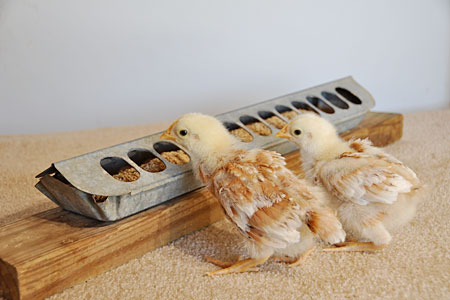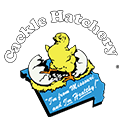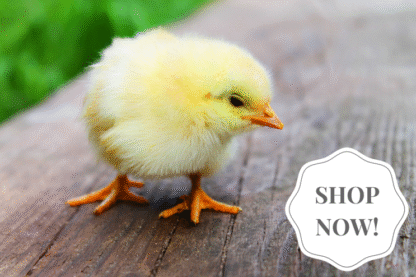
One of a chick’s first instincts is to peck. As soon as chicks are in a brooder, they look for things to peck. On newspaper they will peck the print. If they don’t see anything else to peck, they’ll peck their own toes. Suitable feeders for baby chicks will help them find the starter ration to peck.
First Feeders for Baby Chicks
Chicks that arrive by mail may be a little weak and confused. For the first few days they need help finding the starter ration.
To help them along, sprinkle the starter on a paper plate, a shallow tray, a shoe-box lid, paper towels, or anything similar. Yes, they will waste some feed by pooping in it. But at this stage it’s more important to get them started pecking for something to eat.
Place the starter no farther than 24 inches from the heat source, but not directly under it. When they finish pecking the initial starter, they will look around for more to peck and will find the regular chick feeders.
Types of Feeders for Baby Chicks
The standard type of chick feeder is a round base that screws into a jar full of starter ration. Because this chick feeder style has a small footprint, it’s suitable for brooding a small number of chicks in a limited space.
One option is a galvanized base that screws into a standard narrow mouth canning jar that you provide, either pint or quart size. Another option is a plastic base that comes with a one-quart plastic jar.
Both bases have a cover with holes through which chicks peck the starter. The plastic base has 8 holes. The galvanized base has 9 holes. Allow one hole per chick.
A galvanized trough feeder is suitable for a larger number of chicks. Like the round feeder base, it has holes in the lid to prevent chicks from scratching out the feed. An 18-inch trough feeder has 11 holes on each side, enough for 22 chicks to eat at the same time. The cover slides open for filling.
Filling the Chick Feeder
Baby chicks waste feed through beaking out — the habit of scratching out feed with their beaks. To minimize waste, fill a trough feeder only two-thirds full. To further minimize beaking out, raise either type of feeder as the chicks grow, keeping the holes the same height as the chicks’ backs.
Fill the chick feeder in the morning, and let the chicks empty it before filling it again. Leaving feeders empty for long invites picking. But letting stale or dirty feed accumulate is unhealthful, so strike a happy balance. Clean and scrub the feeder at least once a week.
Outgrowing the Chick Feeder
Growing chicks can reach through the feeder holes for their first four to six weeks, depending on how fast they grow. If you’re brooding broilers, they can use a chick feeder for only about two weeks.
When it’s time to switch to a larger feeder, leave the original feeder in place for a few days. Remove the baby feeders when you’re sure all the chicks are eating from the new one.
Helpful Links
How to Care for Bantam Chicks Shipped By Mail
Tips on Watering Baby Chicks in a Brooder
And that’s today’s news from the Cackle Coop.
Gail Damerow has written several books about keeping poultry, many of them available from the Cackle Bookstore.

